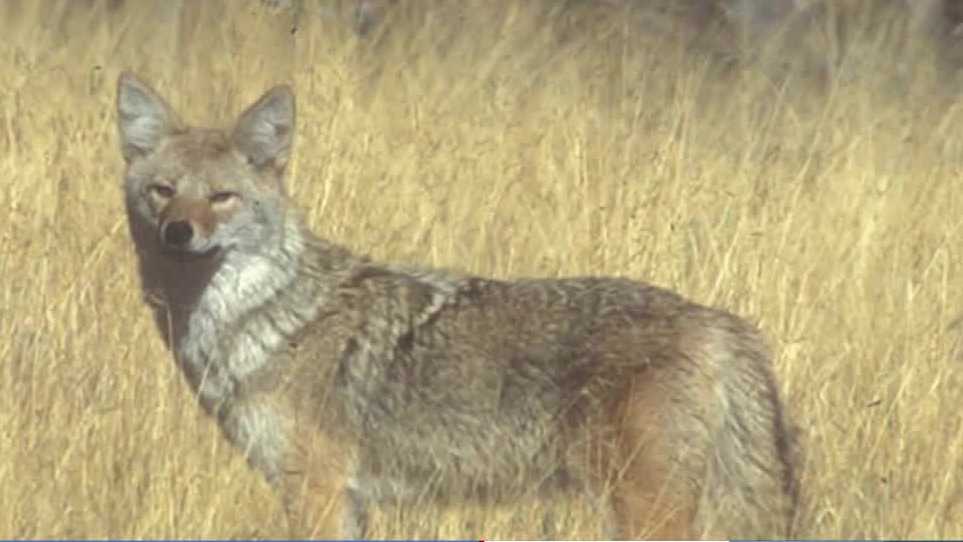The city of Urbandale was one of the first cities in the state to adopt a plan for dealing with coyotes. More and more residents called to report they were seeing them, says a city spokesperson.Since then, several more Des Moines metro communities added the policy or information to their websites. Johnston is the latest. The city council went ahead with its management plan at the Oct. 6 meeting. “We’re in their neighborhood,” says Geoff Hubbard, the city’s director for parks and recreation.The metro Des Moines area has seen an uptick in coyote reports in about the last three years.”We have a natural setting here in Johnston along the Beaver Creek Natural Resource Area, so we have a lot of nature, and we’ve had some concerned citizens about seeing coyotes over the last couple years on their walks, on the trails,” Hubbard says. KCCI Investigates checked with a dozen metro communities, finding Ankeny, Clive, Johnston, Urbandale and West Des Moines all have addressed coyotes. All in about the last three years.The Iowa Natural Resources Department wants cities to address when animals and humans meet.”Coyotes have a fascinating back story, and it goes back into, you know, the ice ages. But coyotes were historically present in Iowa,” says wildlife biologist Andy Kellner.He says the goal is to have steps to deter overly comfortable coyotes.”There’s maybe a coyote that’s learned to take advantage of pet food being left out or something like that,” he says. “It gets too used to people.”Kellner has advice if you see one: Make your presence known. Be loud. Keep food and smaller pets close to you. If a coyote keeps showing up, it might be trapped and moved. That’s where the cities’ management plans help provide steps and guidance.”In those instances, residents need to be able to have opportunities to remove a problem animal,” says Kellner.Urbandale leaders say that intervention has happened since 2023.”We want coyotes to remember that we’re scarier than them,” says Kellner.
JOHNSTON, Iowa —
The city of Urbandale was one of the first cities in the state to adopt a plan for dealing with coyotes. More and more residents called to report they were seeing them, says a city spokesperson.
Since then, several more Des Moines metro communities added the policy or information to their websites. Johnston is the latest. The city council went ahead with its management plan at the Oct. 6 meeting.
“We’re in their neighborhood,” says Geoff Hubbard, the city’s director for parks and recreation.
The metro Des Moines area has seen an uptick in coyote reports in about the last three years.
“We have a natural setting here in Johnston along the Beaver Creek Natural Resource Area, so we have a lot of nature, and we’ve had some concerned citizens about seeing coyotes over the last couple years on their walks, on the trails,” Hubbard says.
KCCI Investigates checked with a dozen metro communities, finding Ankeny, Clive, Johnston, Urbandale and West Des Moines all have addressed coyotes. All in about the last three years.
The Iowa Natural Resources Department wants cities to address when animals and humans meet.
“Coyotes have a fascinating back story, and it goes back into, you know, the ice ages. But coyotes were historically present in Iowa,” says wildlife biologist Andy Kellner.
He says the goal is to have steps to deter overly comfortable coyotes.
“There’s maybe a coyote that’s learned to take advantage of pet food being left out or something like that,” he says. “It gets too used to people.”
Kellner has advice if you see one: Make your presence known. Be loud. Keep food and smaller pets close to you.
If a coyote keeps showing up, it might be trapped and moved. That’s where the cities’ management plans help provide steps and guidance.
“In those instances, residents need to be able to have opportunities to remove a problem animal,” says Kellner.
Urbandale leaders say that intervention has happened since 2023.
“We want coyotes to remember that we’re scarier than them,” says Kellner.

